
The British Science Museum
Welcome to the most impressive Museum of science
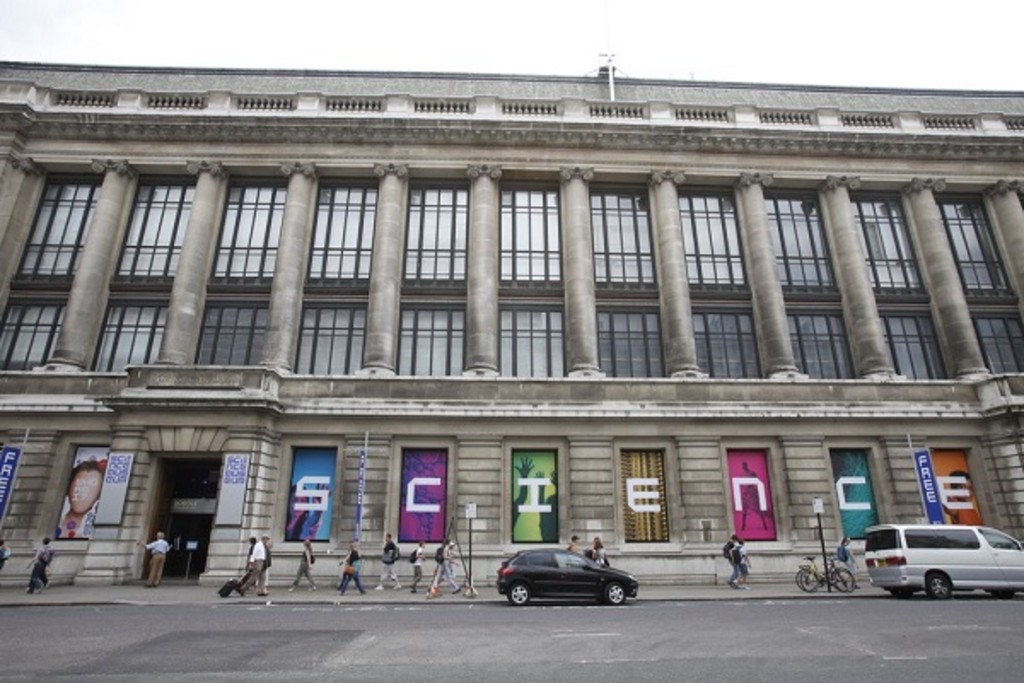
The Science Museum was founded in 1852 by Bennet Woodcroft from the collection of the Royal Society of Arts and surplus of the World Fair, in the South Kensington Museum, now the Victoria and Albert Museum. It included a collection of machines that became in 1858 the Museum of patents (Museum of Patents) and the Patent Office Museum (Patent Office Museum) in 1863. This collection included many of the most famous pieces of the Science Museum. In 1883, the contents of the Museum of the Patent Office was transferred to the South Kensington Museum. In 1885, the science collections were renamed Museum of Science and in 1893 a separate Director was elected. Art Collections were renamed the Art Museum, which became the Victoria and Albert Museum. It is when Queen Victoria laid the foundation stone of the new building of the Museum of Art that she stipulated that the museum should be named after her and her late husband. It was first applied to the entire museum, but when the new building was finally opened ten years later, the name was limited to art collections, and science collections were separated. On June 26/1909 the Science Museum was established as an independent entity. The halls of the museum, designed by Sir Richard Allison, were opened to the public during the period 1919-25,
Electronics Science Museum
During our Science Museum visit, we could see many electronic and informatics components.
First of all, we saw many calculators, more or less old, and more or less complex :
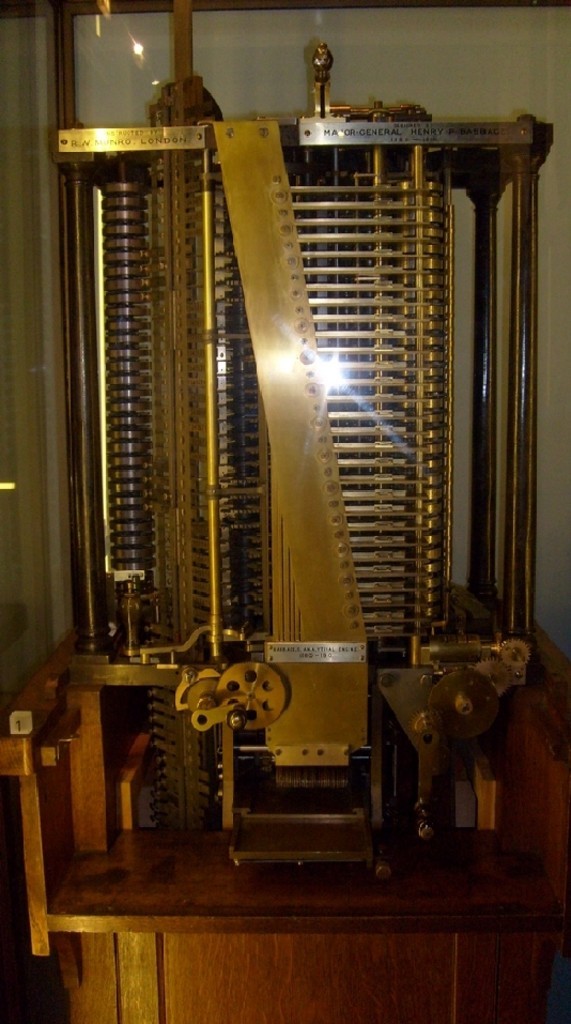
We can see here a mechanical calculator of the 1900’s, made by Henry Babbage. It can do sums, subtractions, and multiplications of whole numbers. Gears turned to modify the binary number stored.
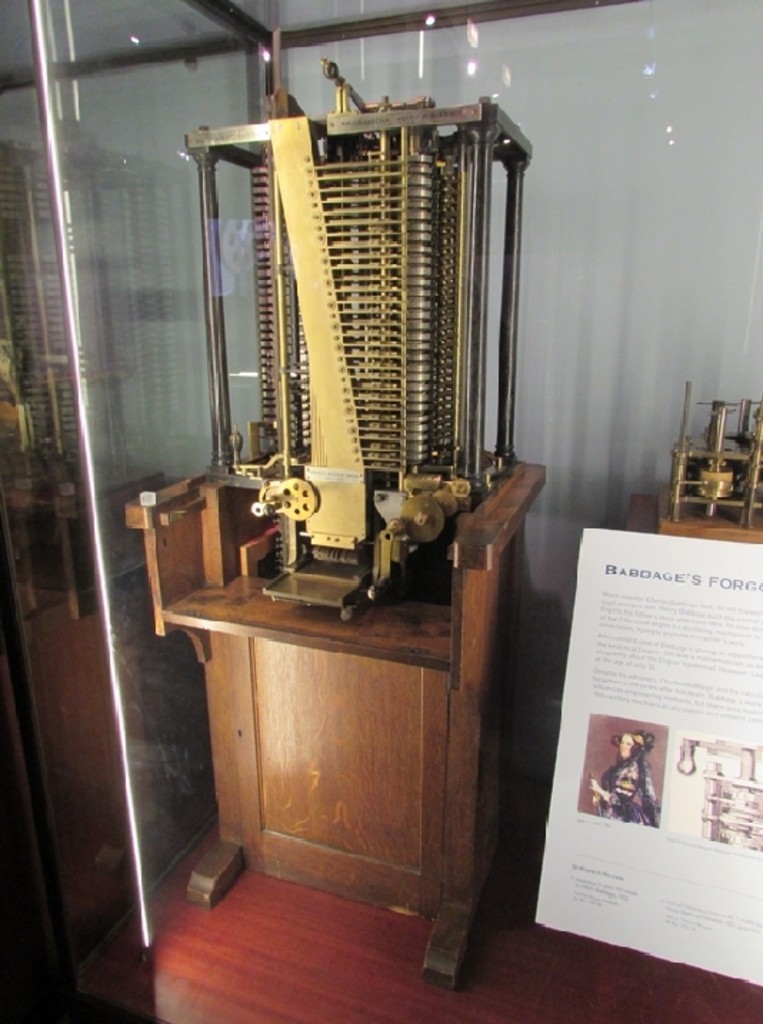 Here, there is a more recent and more compact, which can do all standards operations : adding, subtracting, multiplying, and euclidean divisions (a method to divide learned in elementary school which produces two integers : a quotient (q) and a remainder (r) e.g : 7/3 = 3*2(q) + 1(r). this also allow to divide two functions together).
Here, there is a more recent and more compact, which can do all standards operations : adding, subtracting, multiplying, and euclidean divisions (a method to divide learned in elementary school which produces two integers : a quotient (q) and a remainder (r) e.g : 7/3 = 3*2(q) + 1(r). this also allow to divide two functions together).
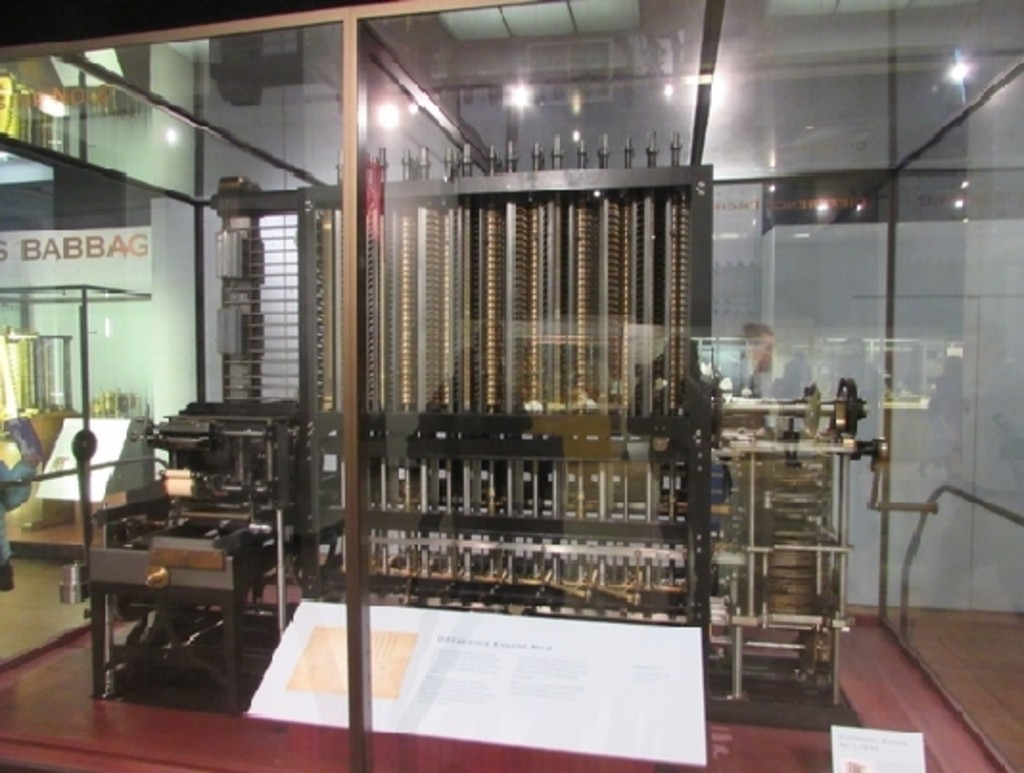 This time, we can see the ’Difference engine’. It was designed to solve polynomial functions. It generates a lots of 31 characters results, defined by a ’finite difference’, hence its name. It weighs 13 tons.
This time, we can see the ’Difference engine’. It was designed to solve polynomial functions. It generates a lots of 31 characters results, defined by a ’finite difference’, hence its name. It weighs 13 tons.
We also saw another type of machine : a sound generator. It generates it with a printed plate which revolves as an old VHS. A light source emits a beam which is reflected, and analyzed. Depending of which combination of transparant/opaque, the sound is generated. Also, the music can be ’edited’, as an actual DJ.

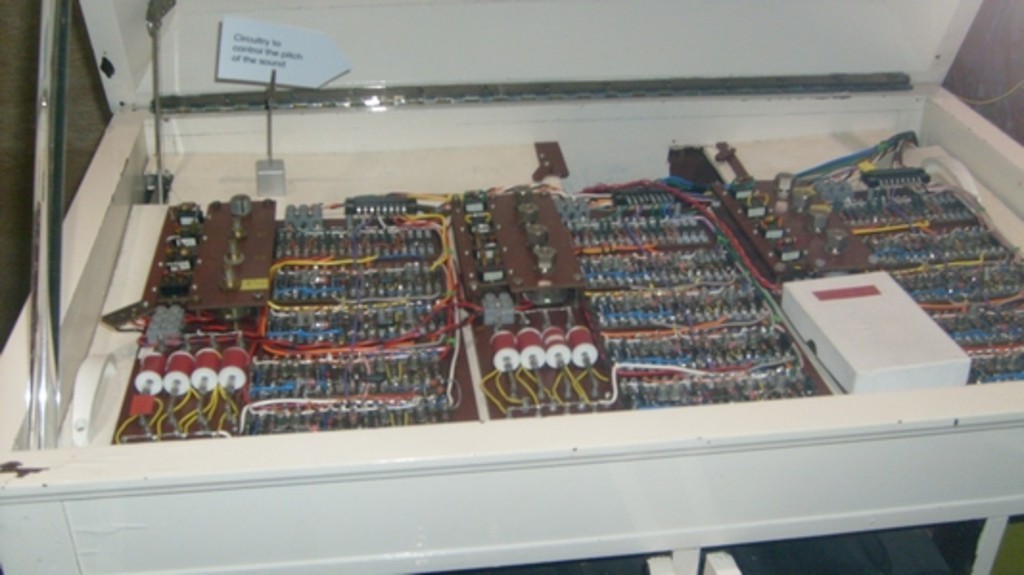 Finally, for me, the most interesting electronic device is the CRAY-1, a supercomputer.
Finally, for me, the most interesting electronic device is the CRAY-1, a supercomputer.
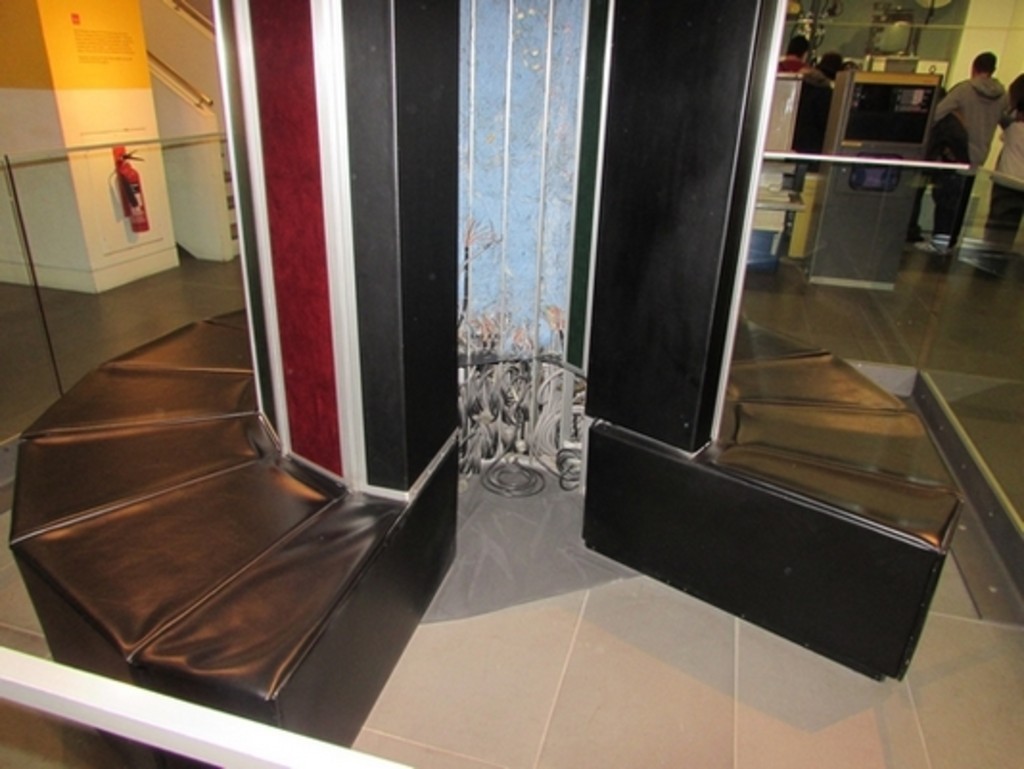 Cray-1 was created by Seymour Cray in 1976. This supercomputer got a vector processing (a vector processing is a way to do a single operation to a huge amount of numbers). It got a 64 bits processor which a cycle time of 83 Mhz, with 8 MB of RAM, and cooled with freon. It can calculate at 166 MFLOPS (166 Million of FLoating Point Operations per Seconds), which is the power reached by the regular computers twenty years later. An innovation of this machine was his circular form, which reduced the length of the cables. It weighs 5 tons, and cost 9 million dollars. One of the 16 created was sent to the ’Las Alamos National Laboratory’. It’s 40 times less powerful than a current smartphone, and 300 times less powerful than a current family computer. But in its days, it was 500 time more powerful than a regular computer.
Cray-1 was created by Seymour Cray in 1976. This supercomputer got a vector processing (a vector processing is a way to do a single operation to a huge amount of numbers). It got a 64 bits processor which a cycle time of 83 Mhz, with 8 MB of RAM, and cooled with freon. It can calculate at 166 MFLOPS (166 Million of FLoating Point Operations per Seconds), which is the power reached by the regular computers twenty years later. An innovation of this machine was his circular form, which reduced the length of the cables. It weighs 5 tons, and cost 9 million dollars. One of the 16 created was sent to the ’Las Alamos National Laboratory’. It’s 40 times less powerful than a current smartphone, and 300 times less powerful than a current family computer. But in its days, it was 500 time more powerful than a regular computer.
The conquest of Space, one of the most beautiful exhibits of the Science museum !!
The historical context :
During the Cold war, United States and USSR engaged a technological battle to get the supremacy of the Space Discovery. The voyage to the moon was one of the biggest challenges to keep the leadership. It was so important that huge budgets were devoted to it by both countries. This “conquest” of the moon was more than a technological breakthrough, it a huge propaganda for each ideology. The US were under pressure because of the media, the newspapers which relating each progress in Aerospatiale’s tests, while the USRR were developing their space shuttles, rockets without the population knowing anything about it !
US section part :
The object that we sought in the Science museum was one of the most important spacecraft during the US spacecampaign. Indeed, the appolo 10 mission was a complete rehearsal of the Apollo 11 mission without the landing phase. The purpose of the mission was to orbit the Moon and to travel there with the entire Apollo configuration for the first time. Astronauts Thomas Stafford and Eugene Cernan orbited 14 kilometers far from the lunar surface in the Lunar Module and they establish a record with the closest approach to the Moon before Apollo 11 landed two months later. This mission prepared the most significant event of the Century… The first human step on the moon !!!!!
Telstar
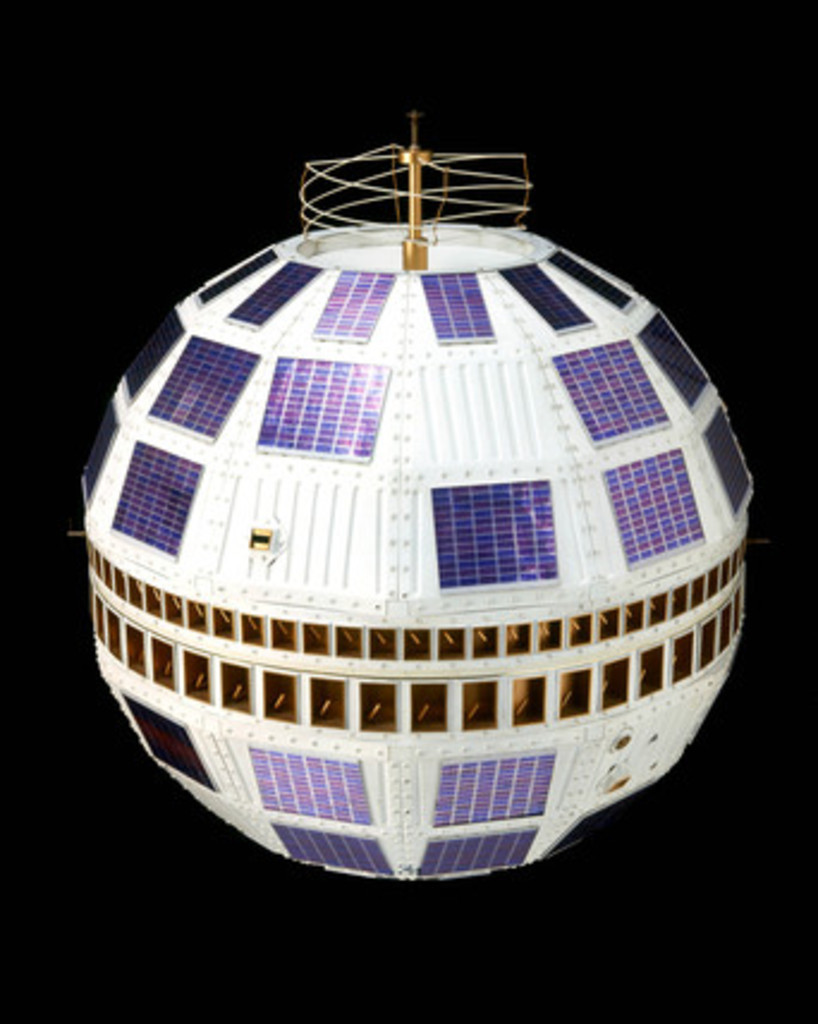
Telstar 1 was launched thanks to a Thor-Delta rocket on July 10, 1962. The purpose of this satellite was to send the first television pictures, telephone calls, fax images and to provide the first live transatlantic television from space !! It represents the first step of the telecommunications systems, started by the USA one of the numerous challenges during the cold war !
UK part
Black Arrow, was a British satellite carrier rocket. Developed during the 1960s, it was used only for four launches in the 1970s. Its final flight was the first and only successful orbital launch to be done by the United Kingdom, and allowed the Prospero satellite to orbit into the low earth’s atmosphere. The program was initially developed by Saunders-Roe, and later Westland Aircraft because of a merger between those groups.
Black Harrow’s engines !
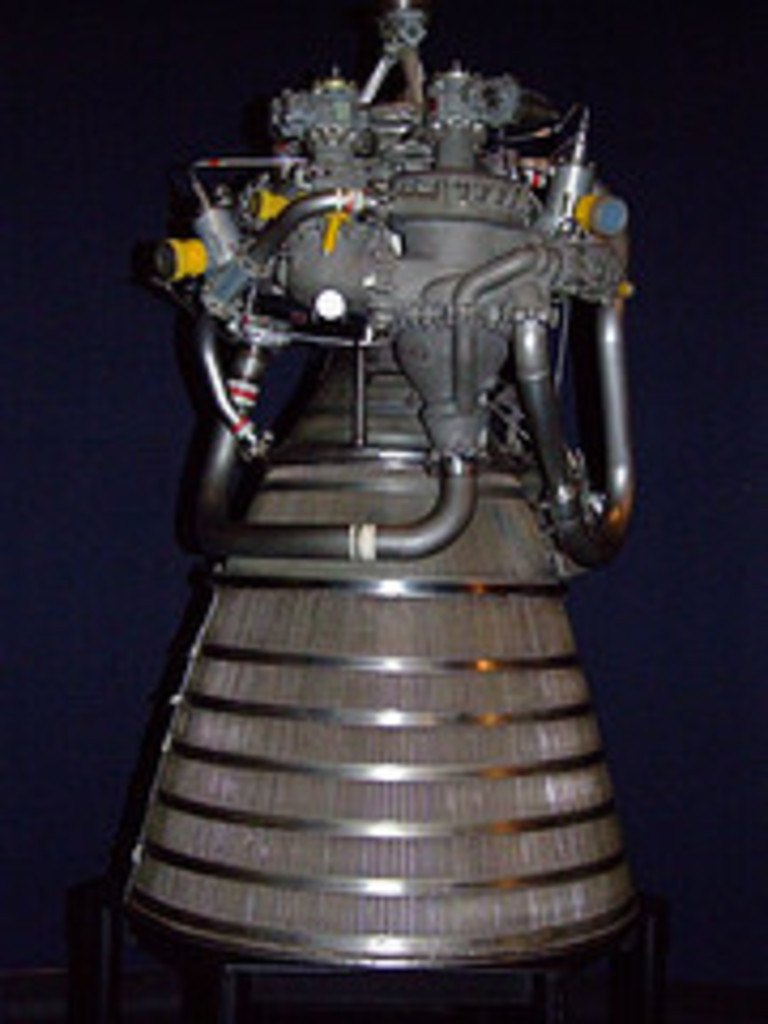
Black Harrow launch system
Black Arrow was a three-stage rocket, using RP-1 paraffin as fuel and a concentrated form of hydrogen peroxide. Unfortunately it was more expensive than the American Scout rockets, and only after four launches, the Black Arrow program was abandoned by the Ministry of Defense.
This satellite carrier rocket shows that the discovery of the universe has been possible thanks to the two super powers, the US and the USSR. France also tried launches with the Asterix satellite in 1778 which wasn’t a very complex program at this time. Europe was lagging behind !!!
USSR part
Sputnik 1
Sputnik 1 was the first artificial Earth satellite launched by the USSR. It was a 58 cm diameter metal sphere, with four radio antennas to broadcast radio waves. This satellite was launched on the 4th of October 1957. It was visible all around the Earth ( thank to the type of orbit) and its radio waves were detectable everywhere. The surprising success of the program, allowed the Ussr to take an advance against the US in this race to space during the cold war, it was an international technological revolution. The launch was accompanied with new political, military, technological, and scientific developments.
Sputnik provided the scientists with valuable information.
For example : It allowed a really precise study of the atmosphere, the density of the upper atmosphere could be deduced from its drag on the orbit, and the propagation of its radio signals gave information about the ionosphere, two things that we study today at school !!
Sputnik 1 was launched during the International Geophysical Year at the 5th Tyuratam range, in Kazakh. The satellite travelled at about 29,000 kilometers per hour taking 96.2 minutes to complete each orbit. The signals continued for 21 days until the transmitter batteries ran out !
It was one of the first Exploits in this conquest. Naturally, the information had been transmitted all around the world. It was the policy of the Russians, the propaganda made by a dictatorship to show how strong they were !!! On the opposite, all the failures were hidden because medias were forbidden !
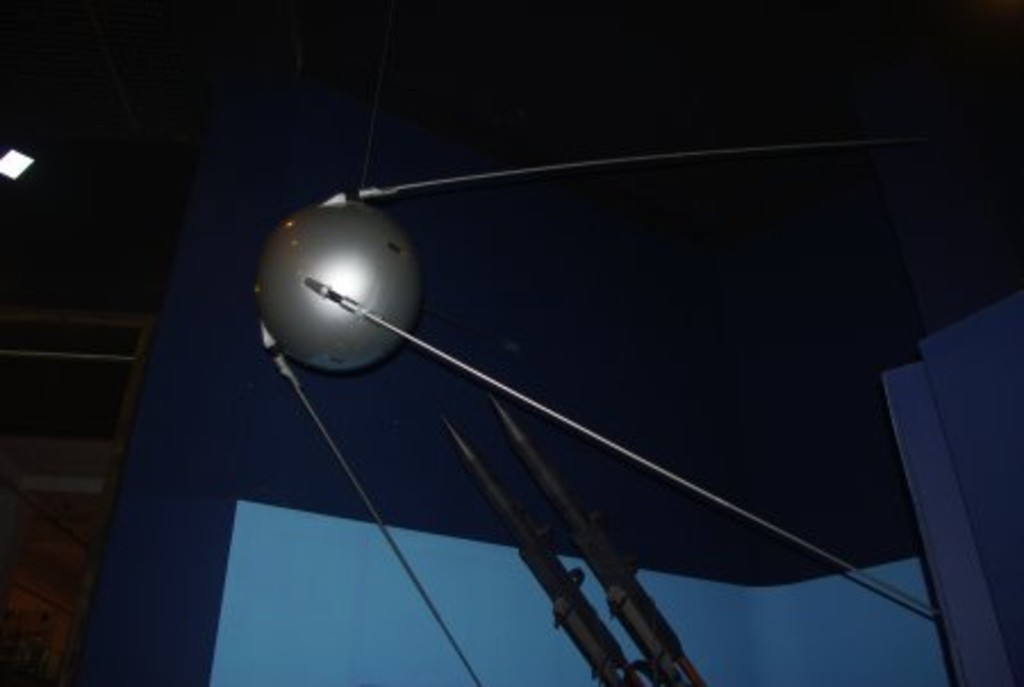
Spoutnik 1
The space conquest was a huge challenge during the cold war for the two rival superpowers. The high tensions between them allowed tremendous progress really fast. The russians launched the first sattelite, a 60 centimeters diameter piece of metal, in 1957, 4 years later a human would orbit around the earth and 12 years would land on the moon, as the living proof of the human faculties when they are fighting each other !
Unfortunately, each nations realised those exploits thanks to the use of bad process. As we saw, the russians hid their failure, but contrary to what we could imagine, the USA weren’t any better. Indeed, Werner Von Braum a prominent German scientist, a convinced nazi, who had developed Hitler’s weapons such as the V 1, worked for the US at that period. The US used a lot of german scientists, because they were almost the best of the world concerning this side of science ! And they forgot their past and convictions…
Aeronautical pieces of technology
A whole gallery is dedicated to Aeronautics and is composed with extraordinary exhibits. We could find a lot of objects reminding us what were the British and international improvements in aviation in the last century. It showed us the impressive evolution which happened in this sector during the 20th century and before. A lot of objects from the flight dreams of Leonardo Da Vinci in the Renaissance to the jump-jet and the wide-body aeroplanes of today were on display.
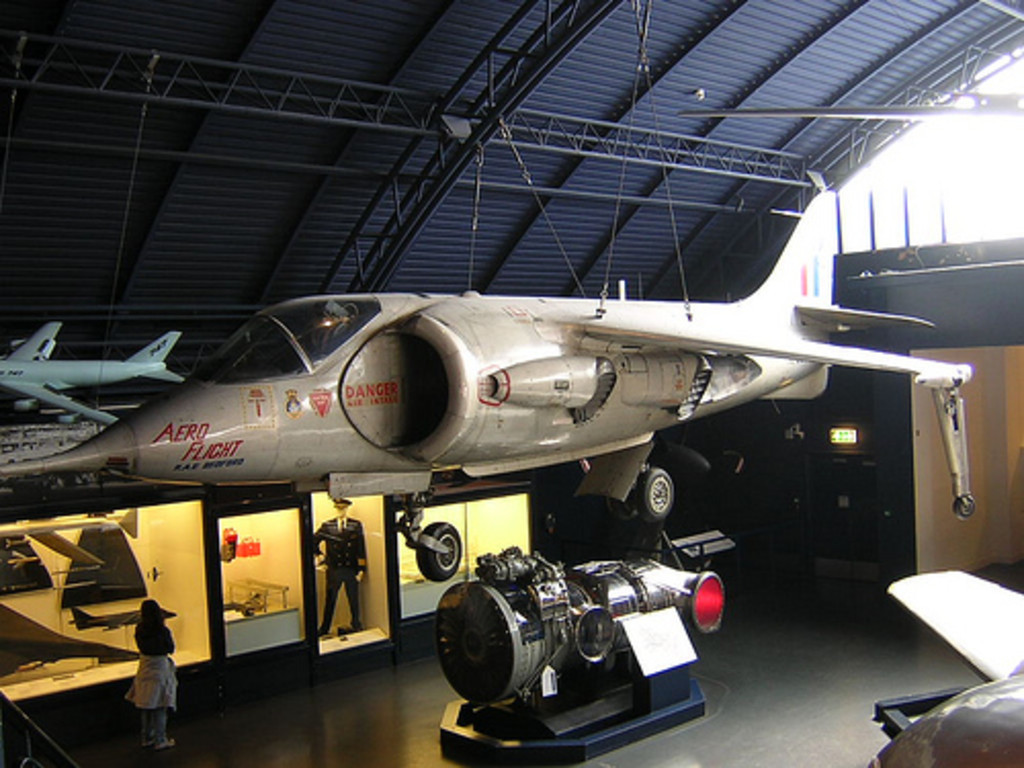
Hawker P 1127
The first days of aviation were the subject of a lot of wonderfull exhibits . A French aeroplane was standing there, it’s the most authentic Antoinette airplane to be seen anywhere in the world and it was particularly interesting to see one of the most famous French pioneer airplane. It’s really important to know that this airplane was used by Hubert Latham to try to cross the English Channel ! But the Blériot won !
Otherwise, there was a most current aeroplane exhibit with the Supermarine S6B racing seaplane, the Hawker P1127, which led to the Harrier jump-jet fighter during a really long study of vertical flight. The Harrier is a really famous fighter ; it was the first Vertical takeoff aircraft and one of the most fantastic aeroplanes in the world ! In the gallery there were more than 100 aircraft models. It was also home to a unique collection of more than 80 significant aero engines, ranging from one which powered the first British airship in 1907 through to a Rolls-Royce RB 211 the precursor of the huge fan-jets that power today’s airliners. There were “star-engines” dating back to the first half of the 20th century which were totally breathtaking !!!!

The RB 211 reactor
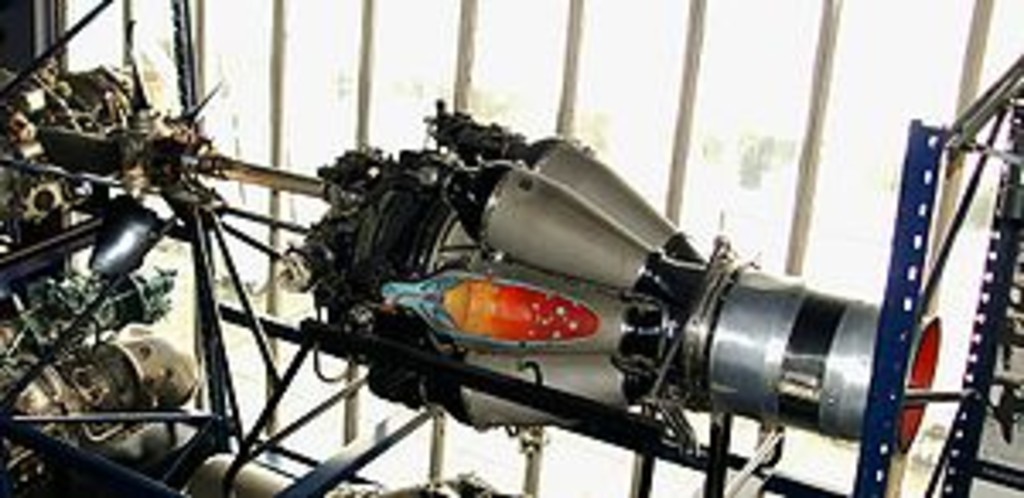
The Rolls-Royce trent an airplane’s reactor
This museum made us realize how wars contributed to speeding up technological progress during the 20th century. Through those two really revealing examples we discovered also that European countries had a huge scientific potential and a lot of advantages that they unfortunetly didn’t kept... ( in aeronautics particularly), French leadership during the beginning of the century has been lost since... perhaps and even certainly because of the wars...
The Science Museum has a collection of more than 300,000 items, including famous works such as Stephenson’s Rocket ; Puffing Billy (the oldest existing steam locomotive ) ; the first jet engine ; a replica of the model of DNA of Francis Crick and James Watson ; some of the oldest remaining steam engines, and British prototype of the first electronic computer, (1950) ; the first prototype of the Clock of the Long Now, the clock built to last 10,000 years ; and documentation of the first typewriter. It also includes hundreds of interactive exhibits. A recent addition is the IMAX 3D cinema with documentaries on science and nature, some of them in 3-D, and the Wellcome Wing which focuses on digital technology. Admission has been free since 1 December 2001, In 2007, it hosted more than 2 700 000 visitors ! The most beautiful, interesting and impressive Museum that was ever made, what an awesome exhibition for science students as we are !
Science museum’s main Gallery

- Podcast et RSS
- Plan
- Mentions
- Rédaction
- Se connecter

-
2009-2024 © Lycée George-Sand La Châtre - Tous droits réservés
Ce site est géré sous SPIP 3.2.19 et utilise le squelette EVA-Web 4.2

Dernière mise à jour : lundi 24 janvier 2022

